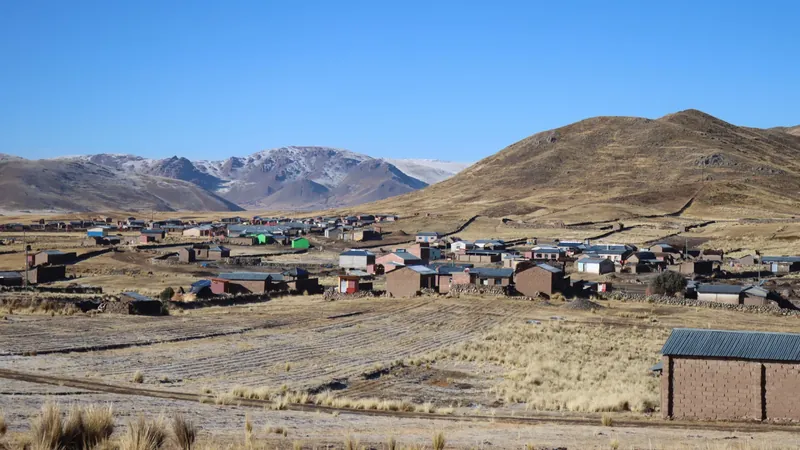
Farming Without Famine: Ancient Andean Innovations Transform Our Understanding of Agriculture
2025-06-26
Author: Li
The Revolutionary Shift from Foraging to Farming
The leap from foraging to farming was a pivotal moment in human history, setting the stage for the rise of modern civilizations. While many believe this transition was marked by struggle and hardship, new research suggests a different narrative.
Unveiling the Ancient Andean Diet
In a groundbreaking study led by Flores-Blanco and his team, they delved into the dietary habits of ancient populations in the Andes during this critical transitional period. They analyzed the bones of 16 individuals unearthed at archaeological sites Kaillachuro and Jiskairumoko in the Lake Titicaca Basin, dating back 5,000 to 3,000 years.
Using Carbon and Nitrogen isotope analysis, researchers found that a staggering 84% of the diet consisted of plant material, complemented by modest amounts of large mammal meat. Remarkably, these proportions were consistent with both earlier foraging communities and those who began farming later.
A New Perspective on Agricultural Evolution
These findings challenge the conventional view that agriculture emerged during periods of scarcity. Instead, the data reveals that food resources in the Andes were stable and abundant for millennia. Early Andean communities effectively managed wild food sources, paving the way for a mixed economy of foraging and farming.
The researchers propose that cultural advancements—such as expanding trade networks and innovations in ceramic and archery technologies—further bolstered this economic resilience.
Ancient Knowledge: The Key to Sustainability
As Flores-Blanco explains, "Our research shows that agriculture's origins in the Titicaca Basin were deeply rooted in resilience. The ancient Andean peoples drew on their extensive knowledge of wild crops like potatoes and quinoa, alongside hunting camelids. This expertise enabled them to manage their natural resources effectively, gradually incorporating domesticated plants and animals into their diets while still relying on the food sources utilized by earlier foragers."
Stability Over Crisis: A Paradigm Shift
Luisa Hinostroza adds, "This study reshapes the traditional narrative surrounding the transition to agriculture, illustrating that in the Altiplano region, it was a stable process rather than a desperate scramble for survival. Our findings underscore the remarkable ability of Andean societies to manage their resources sustainably for millennia."
Collaborative Research That Breaks New Ground
This pioneering work integrates multiple research disciplines to reveal these insights, combining bone dietary analysis, macrobotanical examination, and statistical assessments. Through this collaborative effort, a clearer picture of ancient Andean life emerges, challenging past assumptions about agriculture's origins.



 Brasil (PT)
Brasil (PT)
 Canada (EN)
Canada (EN)
 Chile (ES)
Chile (ES)
 Česko (CS)
Česko (CS)
 대한민국 (KO)
대한민국 (KO)
 España (ES)
España (ES)
 France (FR)
France (FR)
 Hong Kong (EN)
Hong Kong (EN)
 Italia (IT)
Italia (IT)
 日本 (JA)
日本 (JA)
 Magyarország (HU)
Magyarország (HU)
 Norge (NO)
Norge (NO)
 Polska (PL)
Polska (PL)
 Schweiz (DE)
Schweiz (DE)
 Singapore (EN)
Singapore (EN)
 Sverige (SV)
Sverige (SV)
 Suomi (FI)
Suomi (FI)
 Türkiye (TR)
Türkiye (TR)
 الإمارات العربية المتحدة (AR)
الإمارات العربية المتحدة (AR)